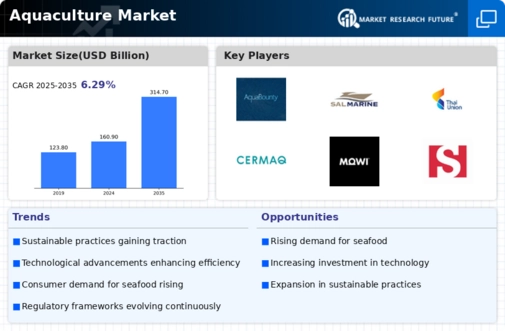Market Trends
Key Emerging Trends in the Aquaculture Market
Changes that are transformative trends to the aqua culture market seem to be motivated by a cumulative effect of several factors that define the diversifying terrains of sea food production, conscious of environment, and technology. One of the most significant trends is related to dynamics within this industry and especially currently, towards increasingly pronounced use of sustainable practices as standard. Under rising global concerns over the effects of overfishing and environment, consumers drivers, regulatory authorities’ cord industrial stakeholders advocating for its to adopt farming practices that champion environmental stewardship. Interdependent practices, such as integrated multi-trophic aquaculture (IMTA), which use complementarities between different production elements to reduce waste and further enhancement of sustainability are becoming popular. It complies with the trend of a world that is developing and moving toward ethical and environmentally responsible seafood production. There have been considerable advances in technology, which has changed the aqua-culture scene as the need to be precise and efficient is needed. The integration of automated monitoring systems, remote sensing, and data analytics to the aqua farming operation is being streamlined. This ensures that it adds value to the production processes while ensuring optimal water quality conservation as well as efficient practices. These technological trends drive the ability of the industry to solve issues like disease control, nutritional management including feed utilization and resource efficiency. Selective breeding programmes which are being revolutionized by state-of-art genetics is another force of change in this sector through rapid improvement in the genetic traits embodied on fast growth rate, resistance to diseases and product quality of cultured species. A less notable but significant trend is diversification of the species of aquaculture. Although finfish farming remains a considerable contribution to the practice of fin fish, there has evolved an increasing trend in the mariculture of alternative species such as mussels and seaweeds. Shellfish farming such as the rearing of oysters, mussels and even clams is becoming popular because this form of fishing is not harmful to nature and can contribute into transformations of water quality through filtration. The cultivation of seaweed has been identified as a result of its nutritional value among other environmental advantages on the basis that it is becoming recognized as an economically viable and sustainable element to be embraced in aqua- culture operations. This phenomenon characterizes an attempt to adapt the industry whereby it adjusted to consumer preference towards their environment moves positively or otherwise considering that the recent features moving alongside ecosystem-based approaches. While transparency and traceability in the supply chain emerge as defining trends in the aquaculture market, this segment’s market dominance will increase gradually. Consumer product trace-ability is gaining momentum in the field of seafood industry as consumers are increasingly concern about where their food comes from, how it is products’ as well as want to understand its environmental impact. In turn, the sector is incorporating traceability systems that enable consumers to monitor and track the seafood movement from its farm to table. Certification programs on aqua a culture for instance including those that are developed by ASC and BAP are also emerging, reassuring consumers about the sustainable approaches of aquaculture farming.

















Leave a Comment